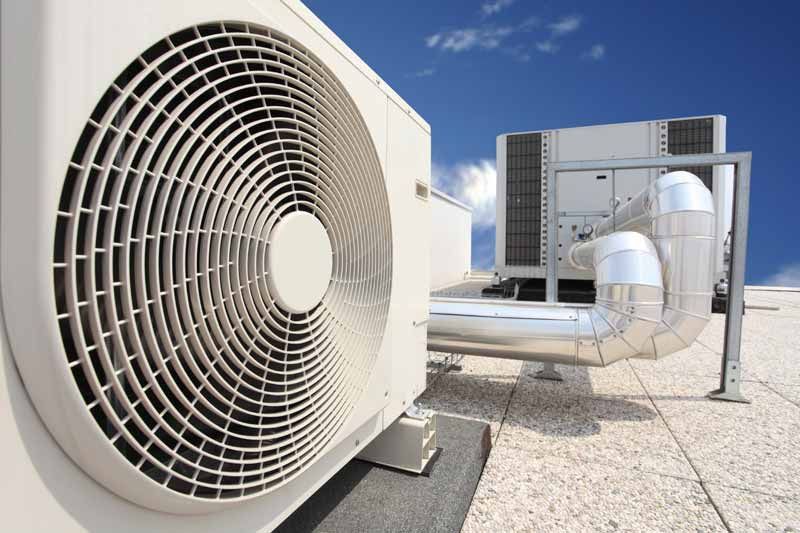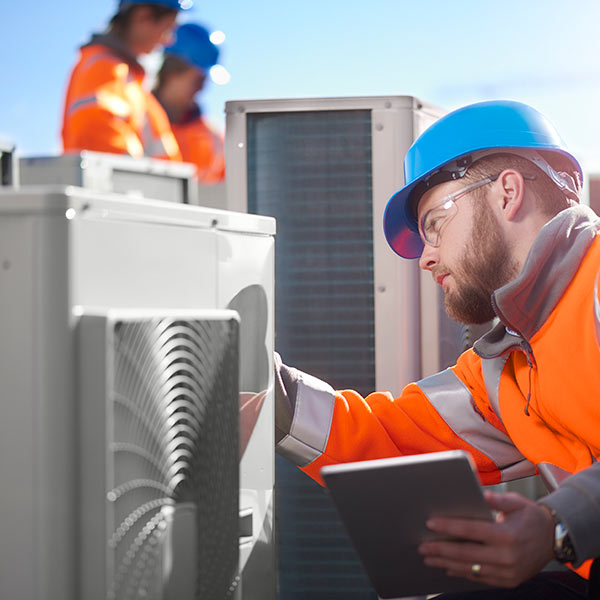Upgrade Tips to Make the Most of Your New furnace replacement
Upgrade Tips to Make the Most of Your New furnace replacement
Blog Article
Exactly How a Heat Pump and Heating System Collaborate to Enhance Your Home's Home heating Effectiveness
Recognizing exactly how a heat pump and heating system collaborate is necessary for homeowners seeking reliable home heating remedies. Each system has its toughness, giving a well balanced method to home convenience. The warmth pump succeeds in moderate temperatures, while the heater provides rapid heat throughout severe cold. This harmony not only reduces power prices but likewise boosts the life-span of both home appliances. What factors affect this partnership, and exactly how can house owners maximize their benefits?
Understanding Warm Pumps: How They Work
Although lots of people may be unfamiliar with their internal functions, heat pumps play a necessary duty in modern heating unit. These devices operate by transferring heat from one location to an additional, making use of the concepts of thermodynamics. In colder months, a heat pump extracts warm from the outdoors air, ground, or water, and transfers it inside your home to warm the home. On the other hand, throughout warmer months, it can turn around the process, serving as an air conditioning unit by eliminating warm from inside to the outside.Heat pumps include an evaporator, condenser, growth, and compressor valve. The refrigerant within the system takes in warmth as it vaporizes at reduced temperature levels and pressures. The compressor then enhances the stress and temperature of the cooling agent, enabling it to launch warm as it condenses. This reliable procedure can greatly decrease energy usage compared to typical home heating techniques, making warmth pumps a lasting selection for environment control in homes.
The Duty of Heaters in Home Home Heating
Heaters play a vital function in home heating by supplying a trusted resource of heat throughout the chillier months. They operate by producing heat via combustion or electric resistance, dispersing it throughout the home using ducts or radiant systems. The efficiency of a heating system is frequently measured by its Yearly Gas Application Effectiveness (AFUE) score, which suggests exactly how effectively the unit transforms fuel into heat.Furnaces can utilize various power sources, including all-natural gas, oil, electricity, or gas, permitting house owners to pick one of the most ideal option for their needs. Unlike warm pumps, which might battle in severe cool, heating systems keep constant efficiency, guaranteeing that indoor temperature levels remain comfortable regardless of exterior problems. Furthermore, modern-day furnaces commonly come outfitted with advanced modern technology, such as wise thermostats and variable-speed blowers, improving their effectiveness and responsiveness. This convenience makes heaters an essential component in all-inclusive home heating approaches.

Benefits of Making Use Of Both Systems With Each Other
Integrating the staminas of both furnaces and heatpump can result in a much more efficient and reliable home heating solution. Utilizing both systems permits home owners to benefit from the heatpump's energy performance throughout milder temperature levels while counting on the heater for more extreme cold conditions. This double method can significantly reduce energy expenses, as warm pumps take in much less electrical power than conventional heating approaches when temperatures are moderate.Additionally, utilizing both systems together can boost comfort levels in the home. Heatpump can provide consistent, also home heating, while furnaces can promptly increase ambient temperature levels when required. The combination of both systems can expand the life-span of equipment by decreasing wear and tear on each unit, as they share the work. Inevitably, property owners can delight in a balanced, cost-efficient home heating solution that changes flawlessly to differing climate condition, making sure a cozy and welcoming home throughout the cold weather.
Just How Heat Pumps and Furnaces Complement Each Various Other
When house owners incorporate heatpump and furnaces, they develop a corresponding heater that takes full advantage of efficiency and comfort. Warmth pumps run by moving heat from the outdoors air or ground, making them very efficient in modest climates. They succeed during milder temperatures, offering cost-effective heating. Alternatively, heaters produce heat with combustion or electric resistance, supplying strong, prompt heat during severe cold conditions.The combination of these 2 systems enables vibrant modifications based upon temperature variations. During warmer months or milder winter days, the heatpump can take the lead, conserving energy and decreasing costs. As temperatures decrease, the heating system can perfectly involve, making certain constant heat throughout the home. This synergy not only maximizes energy use but additionally boosts the life expectancy of both systems, as each system operates within its perfect performance array. Together, they create a balanced atmosphere that adjusts to varying environment needs.
Maximizing Effectiveness: Tips for Homeowners
House owners can enhance their home heating performance through a number of sensible approaches. Developing a normal maintenance schedule, integrating clever thermostat technology, and applying reliable insulation and securing options are essential steps. These steps not only improve comfort however additionally decrease power expenses.
Routine Upkeep Arrange
To assure optimal home heating effectiveness, establishing a regular upkeep routine is essential for any type of home. Property owners should focus on routine examinations of both warm pumps and heaters to determine peak efficiency. This consists of transforming air filters every one to three months, as stopped up filters can significantly lower efficiency. Furthermore, scheduling professional upkeep at the very least when a year allows service technicians to identify and attend to potential problems prior to they escalate. Home owners must also clean the heatpump's outside unit to stop particles accumulation that can prevent air movement. By adhering to a routine upkeep schedule, house owners not just boost their heater' effectiveness however likewise prolong their lifespan, leading to greater comfort and decreased power prices throughout the cooler months.
Smart Thermostat Assimilation
Incorporating a wise thermostat into a home heating unit can significantly enhance energy efficiency, particularly as it permits accurate control over temperature setups. These tools can find out the home owner's timetable and preferences, automatically adjusting the temperature level to enhance comfort while minimizing power usage. They can decrease home heating during times when the home is empty, lowering unnecessary intake. Lots of smart thermostats also supply real-time energy use data, enabling property owners to make educated choices regarding their home heating habits. In addition, remote gain access to via mobile phone apps permits individuals to readjust settings from anywhere, ensuring the home is warm upon return. Overall, wise thermostat assimilation not only improves convenience however substantially contributes to power financial savings and effectiveness.
Insulation and Sealing Solutions
Smart thermostats play an important duty in power efficiency, however their performance can be considerably improved by correct insulation and securing services. House owners need to prioritize insulating wall surfaces, attics, and floorings to reduce warmth loss. High-grade insulation materials, such as spray foam or fiberglass, can substantially enhance thermal resistance. Additionally, sealing voids around home windows, air ducts, and doors protects against cold air infiltration and heat escape. Weatherstripping and caulking are effective techniques for resolving these leakages - ductless mini splits. Routine inspections for air leakages, in addition to using blower door examinations, can help identify problem locations. By purchasing insulation and sealing, house owners can enhance the performance of their heater, ultimately bring about minimized power consumption and lower energy costs
Usual Misconceptions Regarding Warm Pumps and Furnaces
What misunderstandings surround heatpump and furnaces? Many people incorrectly think that heatpump are inadequate in colder environments. In truth, contemporary heatpump are made to operate efficiently also in low temperatures, giving reliable home heating throughout winter season. One more usual myth is that furnaces are always extra efficient than heatpump. Nonetheless, this depends upon the specific power sources and performance rankings of the devices concerned. Some may additionally believe that using both systems concurrently is unnecessary, however in truth, this combination can enhance heating efficiency, specifically during severe climate conditions. Furthermore, people typically presume that heatpump call for constant upkeep, when in reality, they have comparable maintenance needs to typical furnace. By disproving these myths, home owners can make more educated choices concerning their heating choices, inevitably leading to enhanced comfort and energy performance in their homes.
Maintenance Considerations for Combined Equipments

Frequently Asked Concerns
Can Warmth Pumps Job Successfully in Extremely Cold Climates?
Heatpump can have a hard time in exceptionally cold environments due to decreased performance and heat removal limitations. Innovations in innovation have actually led to versions made for far better efficiency in such conditions, enhancing their practicality in severe atmospheres.
How Much Time Do Heat Pumps and Furnaces Normally Last?
Heatpump typically last 15 to 20 years, while heaters have a lifespan of 15 to thirty years. Regular maintenance can extend their durability, guaranteeing efficient operation and reducing the requirement for early replacements.

What Is the Typical Price of Setting Up Both Equipments?
The typical cost of installing both a warmth pump and a heating system usually ranges in between $5,000 to $10,000 - furnace replacement. Elements affecting this cost consist of system dimension, installation complexity, and local labor prices
Are There Tax Motivations for Utilizing Energy-Efficient Home Heating Equipments?
Several property owners ask about tax obligation incentives for energy-efficient heater. Numerous federal and state programs typically provide debts or rebates, encouraging the adoption of sustainable modern technologies to minimize power intake and promote environmental duty.
Just how Do I Choose the Right Size Warmth Pump and Heater?
Picking the right size warm pump and heating system entails calculating the home's square video footage, taking into consideration insulation quality, and assessing regional climate. Consulting a specialist can assure optimal system efficiency and power efficiency based on particular requirements. heat pump installation ooltewah tn. Understanding just how a warmth pump and heating system job together is necessary for homeowners seeking efficient home heating remedies. In cooler months, a heat pump extracts warm from the outside air, ground, or water, and transfers it indoors to warm the living area. When home owners incorporate warm pumps and furnaces, they create a corresponding heating system that optimizes performance and comfort. Warmth pumps operate by transferring warmth from the outside air or ground, check out here making them highly efficient in moderate climates. Heat pumps can battle in incredibly cool environments due to lowered effectiveness and warm extraction restrictions
Report this page